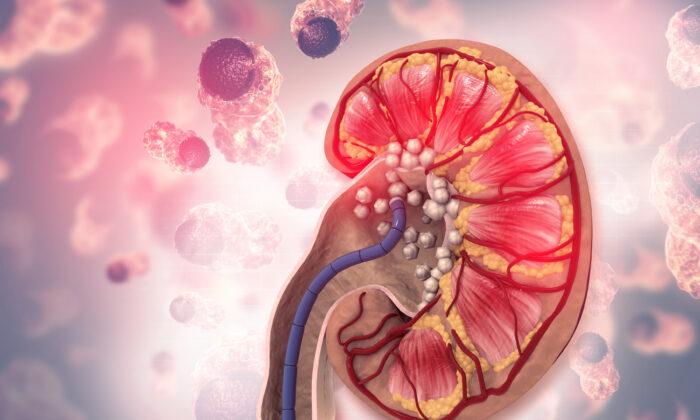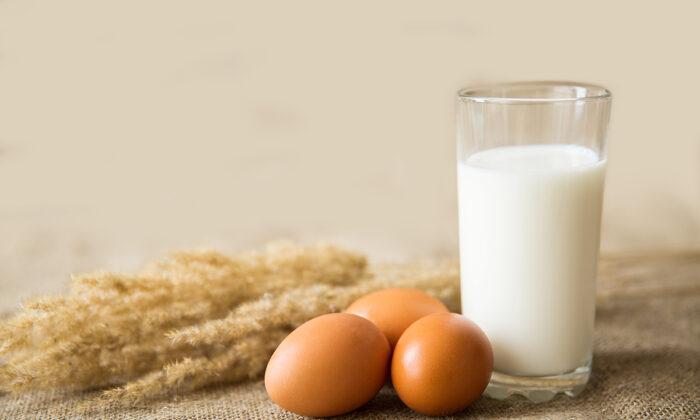Gout has been known as the “disease of kings” since ancient times due to many people suffering from gout attacks after eating a lot of fish and meat. High uric acid build-up in the body has been believed to be caused by eating high-purine foods such as meat and seafood.
However, some people have high uric acid in the body, but they do not have gout; some people develop gout even though the uric acid level is low.
In fact, gout is not necessarily due to the intake of high-purine food, or high uric acid. There is another key reason.
What Brings on a Gout Attack?
A gout attack is a terrible thing. It comes quickly and violently, like a needle sticking into a bone, which is extremely painful.Gout attack is related to excessive uric acid in the body, which deposits and crystallizes in the joints; so hyperuricemia is regarded as a risk factor for gout. Uric acid is the product of purine metabolism. About 80 percent of purine in the human body comes from body catabolism, and the other 20 percent comes from food. “In healthy individuals two-thirds of uric acid is excreted by the kidney and one-third by the intestine with breakdown of urate by gut bacteria,” explains a 2012 study. [1]
However, scientists have found that there is no direct relationship between uric acid levels and developing gout. Some people with low blood uric acid levels still develop gout, but some people have higher uric acid levels than normal but do not develop gout.
Chen Junxu, a physician and director of the DCNHC, pointed out that the key to gout attacks is the deposition of uric acid. Some people’s uric acid will not precipitate and crystallize, so it will not cause gout.
He explained that this is related to the principle of acid-base neutralization. Acidic substances easily crystallize in an acidic solution, but will be neutralized in an alkaline solution and will not form crystals. A review by the NYU School of Medicine pointed out that the crystallization of uric acid involves a variety of factors, including an acidic environment.[2]
However, blood is slightly alkaline, with a pH between 7.35 and 7.45. If it is below 7.35 (acidosis) or above 7.45 (alkalosis), the person would have been sent to the ER. Cells are usually weakly alkaline. So where does the acidic environment come from?
Chen explained that it is the acidity and alkalinity of the joint tissue fluid.
When the tissue fluid in the joint is acidic, even if the uric acid level is not high, the uric acid easily precipitates and crystallizes here, causing gout attacks. If the tissue fluid is slightly alkaline, even if the uric acid is a little high, it will not precipitate because it will be neutralized.
How Can One Find Out if Tissue Fluid Is Acidic or Alkaline?
Tissue fluid, also known as interstitial fluid, exists between cells and is the medium for material exchange between blood and tissue cells. Chen pointed out that in order to maintain the blood pH, acidic metabolites must be excreted into the tissue fluid, resulting in a relatively unstable pH value of the tissue fluid.Japanese researcher Yoshinori Marunaka wrote in a study on interstitial fluids that, “Interstitial fluids have little pH buffering capacity. Therefore, over production of acid metabolites lower pH of interstitial fluids even when the intracellular and ‘arterial’ blood pH remains normal.” [3]
In addition, a study in BioMed Research International pointed out the importance of pH homeostasis in maintaining physiological homeostasis and preventing disease development; when tissue fluid becomes acidic due to the influence of acidic metabolites, the balance of cellular metabolism will be disturbed, leading to metabolic diseases.
“In contrast to the intracellular and blood pH, interstitial fluid pH can easily be reduced by acid stress. This can disturb homeostasis of the intracellular metabolism, leading to the development of metabolic diseases.”[4]
Overweight and abdominally obese people tend to be acidic in tissue fluid due to poor metabolism. The risk factors for gout include obesity and metabolic syndrome characterized by abdominal obesity.
How do you find out if your tissue fluid is acidic?
Chen said that it can be measured from saliva. Saliva is originally weakly alkaline, and the pH value should be 7.2 to 7.4. If it is detected as weakly acidic, the tissue fluid of the joint is likely to be too acidic. When a patient experiences gout attack, the saliva pH may have dropped to 5.5.
Add These Foods to Prevent a Gout Attack
According to the aforementioned theory, when the tissue fluid becomes weakly alkaline, the uric acid will be slowly dissolved.In clinical treatment, Chen mainly asks patients to supplement alkaline minerals, such as calcium and magnesium, which people are prone to lack.
To turn the tissue fluid back to a slightly alkaline state, more severe patients need to supplement 1000 mg of calcium and 500 mg of magnesium a day. Patients also need to avoid fried foods and processed foods that weaken the body’s metabolism. Chen would ask his patients to make a follow up visit to the doctor every week for about a month, to track to patient’s gradual improvement. Over this time, the saliva pH would usually return to 7.2.
For those who have mild symptoms or are generally healthy, Chen recommended eating green vegetables of high calcium and magnesium content. For example, spinach, kale, red amaranth, cabbage, green cabbage, sweet potato leaves, okra, and so on.
In another article, Yoshinori also introduced the idea that “various fruits and vegetables were categorized as lower potential renal acid load (PRAL) foods and could induce the body fluid to alkaline state.”
He wrote, “Various bioactive factors present in natural foods such fruits and vegetables can have potential alkaline functions that contribute to pH homeostasis through several mechanisms.” [5]
Spinach, celery, eggplant, tomato, green beans, raisins, black currents, banana, apricots, orange, and apple can reduce acid load in the whole body. [5]
When the body’s tissue fluid is adjusted back to weak alkaline, it helps to reduce the risk of a gout attack, while also improving body odor and the breath.
Chen said that when the body is acidic, the person can smell and have bad breath, which the person might not even realize. When the physical conditions improve and the acidic metabolites are excreted outside the body, it will also correct the physical smell.
However, if you start to eat and drink indiscriminately, or even stay up late, the tissue fluid will become acidic again, and the gout will recur.
Preventing Gout
- Seafood, meat, and other high-purine foods can be eaten normally and in moderation, but vegetables should account for nearly half of the diet.
- Drink plenty of water to boost metabolism. There is no need to drink alkaline water specifically; it does not help much.For non-severe gout patients, if you desire to take calcium and magnesium supplements, the calcium is a few hundred milligrams, and the magnesium is half of the calcium.
- Regular and moderate exercise helps the body to metabolize. Avoid excessive exercise and fasting. Intense exercise can easily damage joints, stimulate uric acid precipitation and induce gout.
- Because gout is related to metabolism, “Maintaining non-obese weight and weight loss across adulthood is essential for the prevention and treatment of gout in adult life.” [6]
- Maintain a healthy lifestyle, and avoid drinking alcohol and staying up late.






